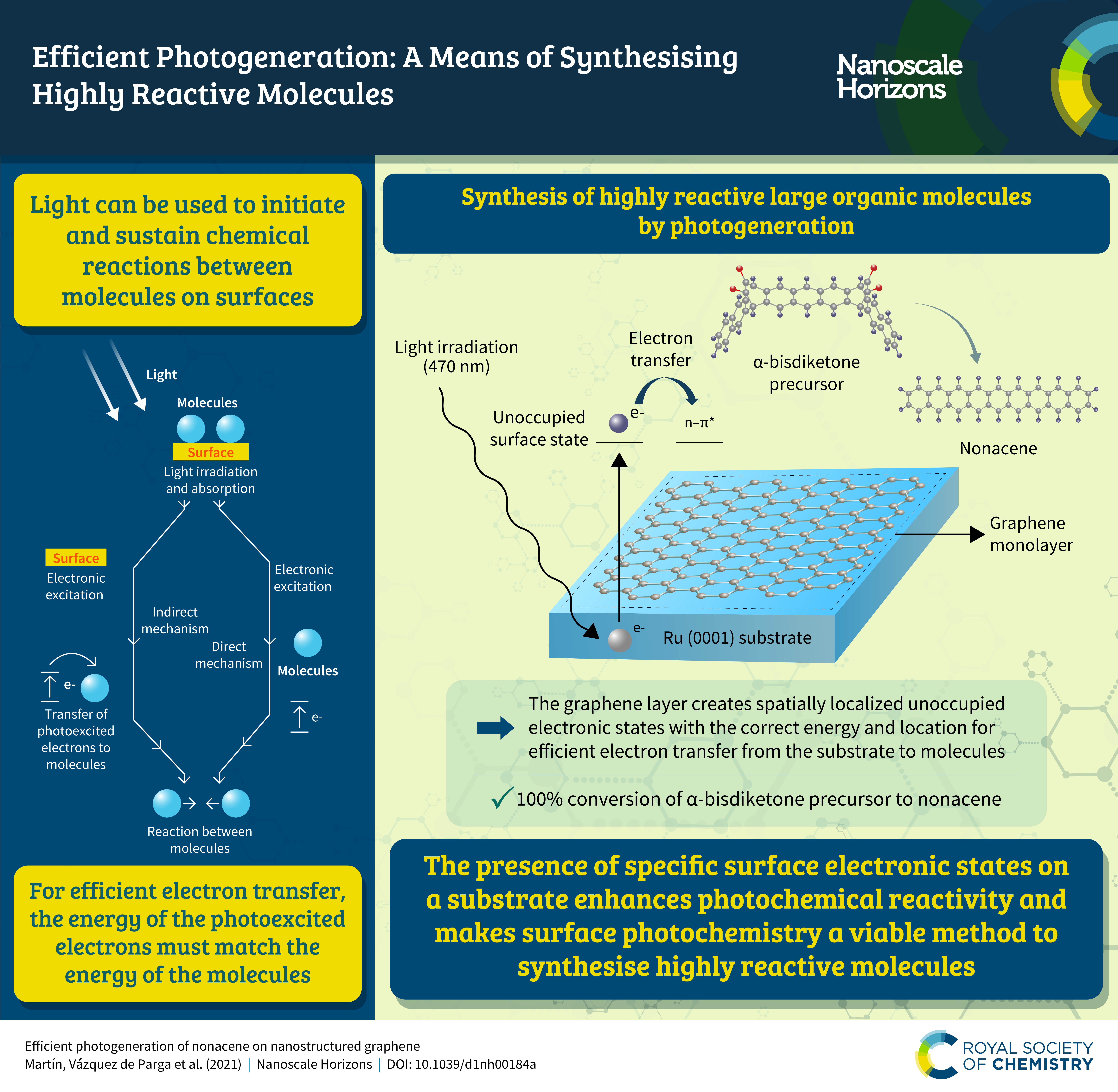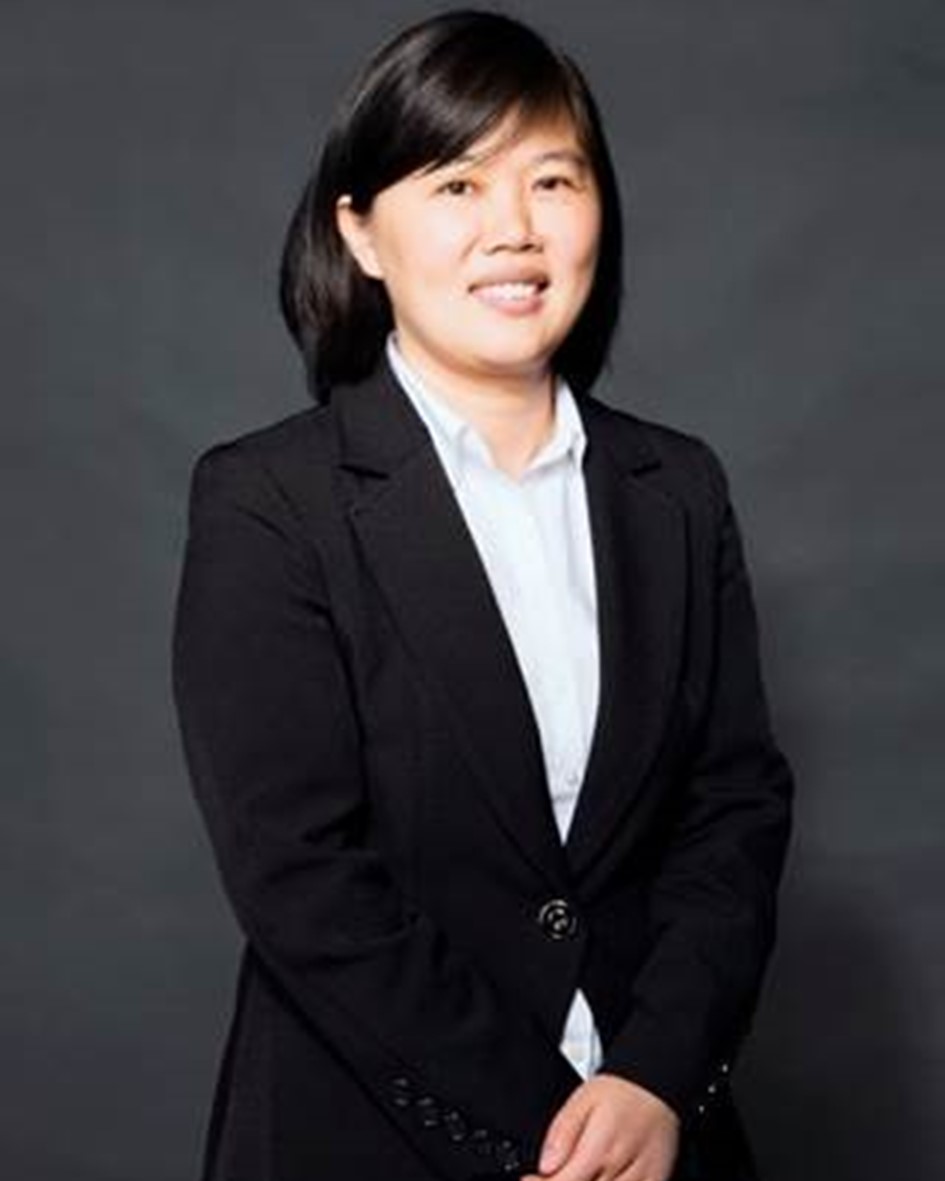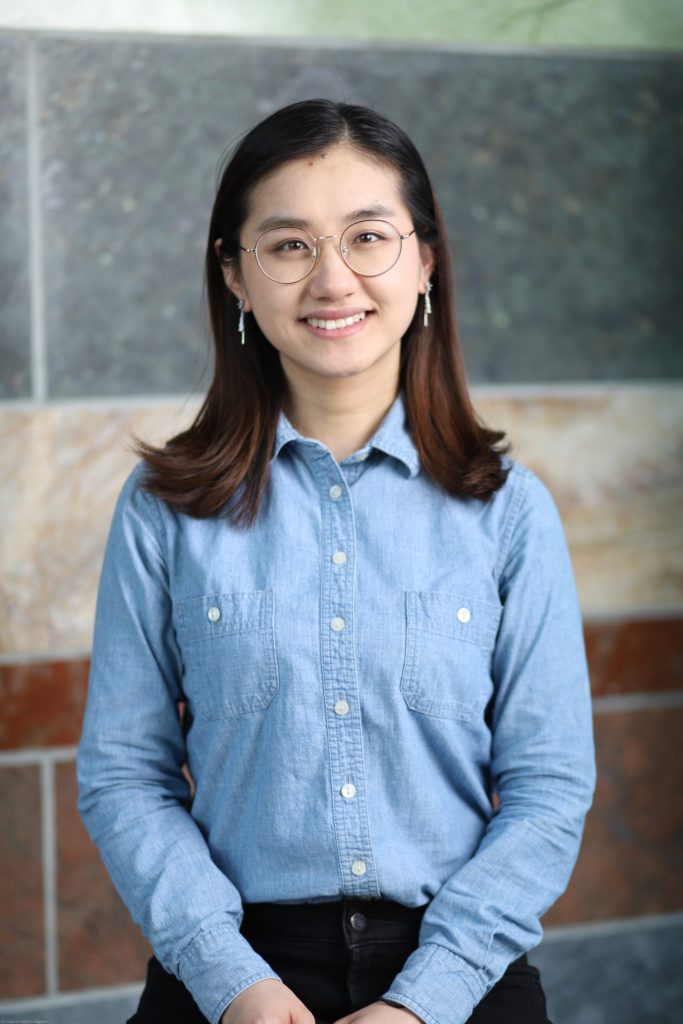Looking back at 2021
An overview of the exciting events, activities and news for Nanoscale Horizons from 2021
We would like to share some of the exciting events, activities and news for Nanoscale Horizons from 2021 with you. Thank you for your engagement last year and for enabling the journal to continue to support the community. We look forward to another great year for the journal in 2022.
Board updates
Professor Jang-Kyo Kim, Hong Kong University of Science and Technology, Hong Kong, completed his final term as a member of the Nanoscale Horizons Editorial Board and joined our Advisory Board. We would like to thank him for his excellent service to the journal and community over many years.

Along with Professor Kim, we welcomed two other new Nanoscale Horizons Advisory Board members in order to better represent the ever-increasing diversity of our authors and readers.
• Dong Qin, Georgia Institute of Technology, USA
• Manzhou Zhu, Anhui University, China
A full list of the Nanoscale Horizons Advisory Board members can be found here.
Outstanding paper award
Following on from the success of our inaugural Nanoscale Horizons Outstanding Paper Award last year, we were delighted to introduce the winners of our 2020 Outstanding Paper Award.
Please join us in congratulating the winners of the 2020 Outstanding Paper Award and we hope that you enjoy reading their outstanding articles as much as we did.
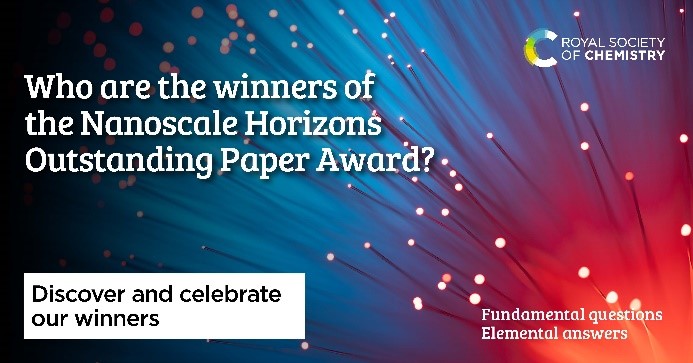
Outstanding reviewers
Nanoscale Horizons once again recognised the significant contributions that our reviewers have made to the journal and highlighted the 2020 Outstanding Reviewers for Nanoscale Horizons in this Editorial.
Community board collections
We published two collections on topics selected by the Community Board members of Materials Horizons and Nanoscale Horizons:
- Solar Energy Conversion, Guest Edited by Rebecca Gieseking (Brandeis University, USA), Alexandra Ramadan (University of Oxford, UK) and Jungki Ryu (Ulsan National Institute of Science and Technology, Republic of Korea).
- Optical and Photonic Materials, Guest Edited by Xiaolu Zhuo (CIC biomaGUNE, Spain), Li Na Quan (Virginia Tech, USA) and Qingchen Dong (Shanghai University, China).
Horizons journal club
We held our first Materials Horizons and Nanoscale Horizons Journal Club. The format aims to encourage discussion of the cutting-edge research published in the journals and fosters community engagement between our authors and readers.
The first event focussed on energy storage and conversion and featured following speakers and papers. It was hosted and chaired by members of our early-career Community Board and supported by our Editorial Board.
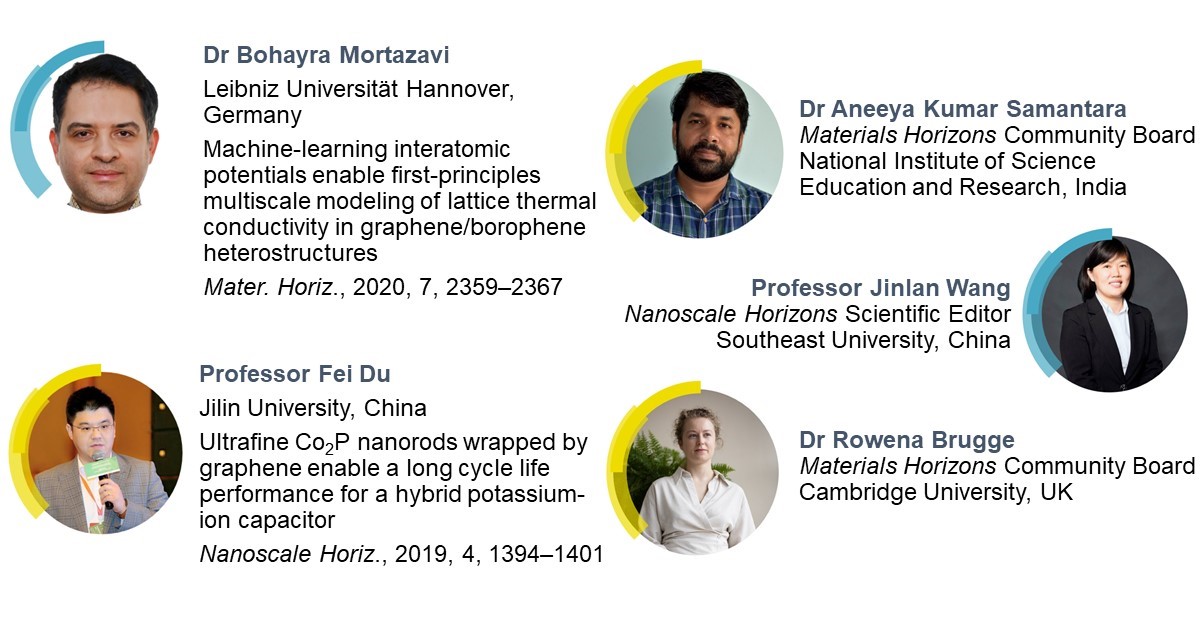
Focus articles
Finally, discover our latest educational articles, addressing topic areas that are often misunderstood or require greater explanation, in the Nanoscale Horizons Focus Article Collection.
The Nanoscale Horizons team wish you a Happy New Year!
With best wishes,
Dr Heather Montgomery
Managing Editor, Nanoscale Horizons
Comments Off on Nanoscale Horizons: Looking back at 2021











